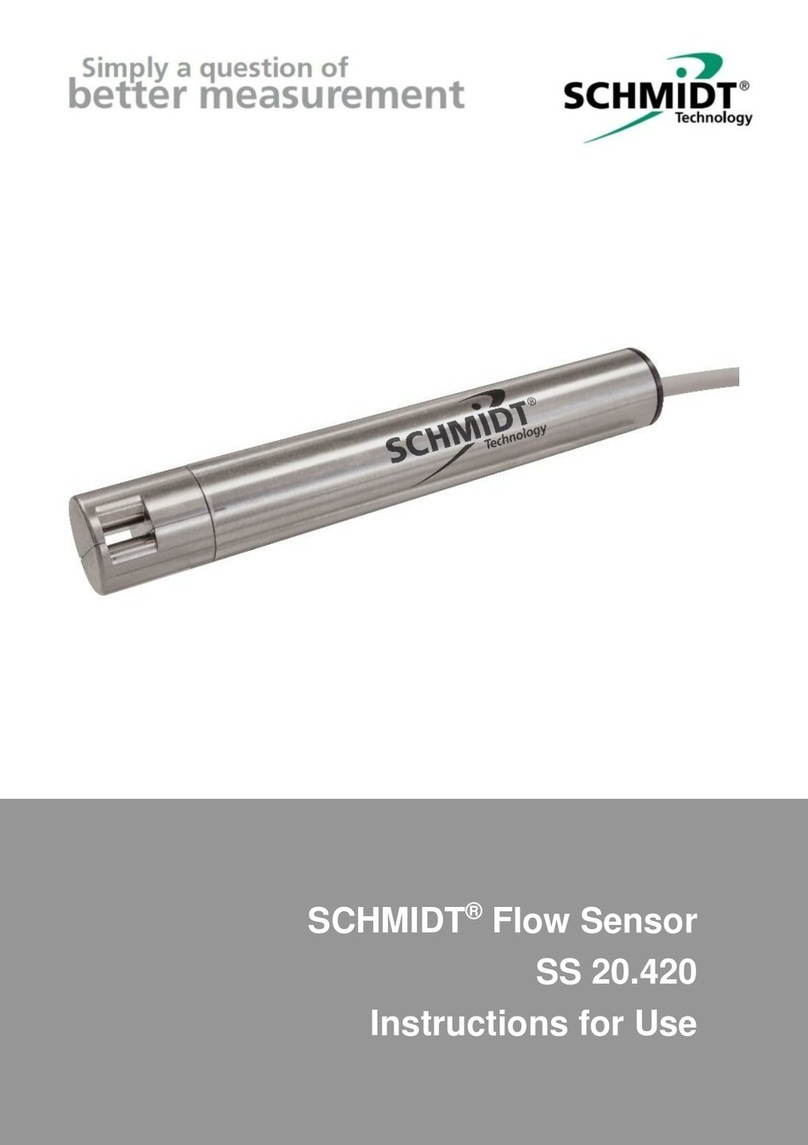
Instructions for Use –SCHMIDT®Flow Sensor SS 20.651 Page 3
1 Important information
These instructions for use must be read completely and observed care-
fully, before putting the unit into operation.
Any claims under the manufacturer's liability for damage resulting from
non-observance or non-compliance with these instructions will become
void.
Tampering with the device in any way whatsoever - with the exception
of the designated use and the operations described in these instruc-
tions for use - will forfeit any warranty and exclude any liability.
The device is designed exclusively for the use described below (see
chapter 2). In particular, it is not designed for direct or indirect protec-
tion of personal or machinery.
SCHMIDT Technology cannot give any warranty as to its suitability for
a certain purpose and cannot be held liable for errors contained in
these instructions for use or for accidental or sequential damage in
connection with the delivery, performance or use of this device.
The following symbol has to be observed:
Danger warnings and safety instructions. Read carefully!
Non-observance of these instructions may lead to injury of per-
sonal or malfunction of the device.
2 Application range
The SCHMIDT®Flow sensor SS 20.651 is designed for the stationary
measurement of flow velocity as well as temperature of air. The sensor
measures standard velocity wN(unit: m/s) based on standard conditions
of 1013.25 hPa and 20 °C. The output signal is linear and independent of
pressure and temperature of the measured medium.
The basic version (without coating) is suitable only for clean air. Especially
the occurrence of aggressive components (e.g. sulfur, chlorine, phosphor,
etc.) can be done only on the customer's own responsibility.
Due to the high operating temperatures even low concentrations
of aggressive components can lead to a significant reduction of
the sensor’s lifetime.
With optional coating (Parylene) the sensor exhibits a higher tolerance
concerning pollution and an increased media resistance. The respective
suitability has to be considered in each case due to the different environ-
mental conditions.
When using the sensor outdoors, it must be protected against
direct exposure to the weather.





























